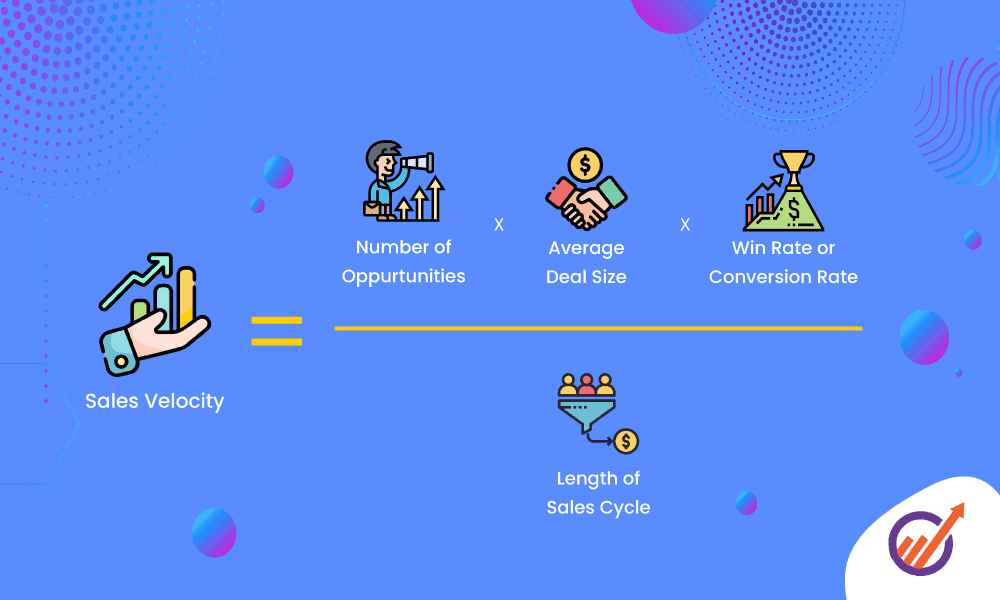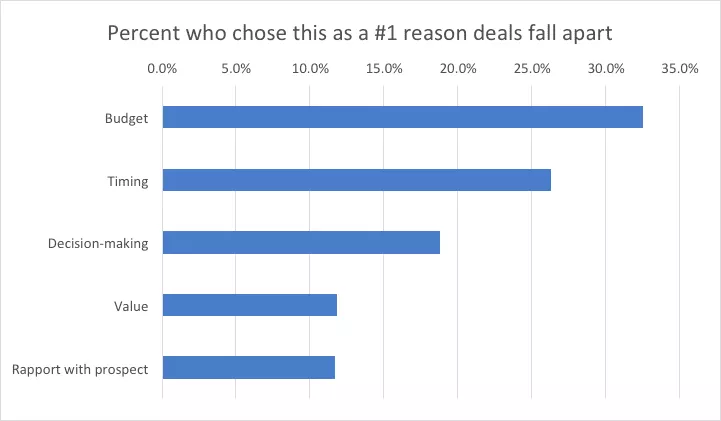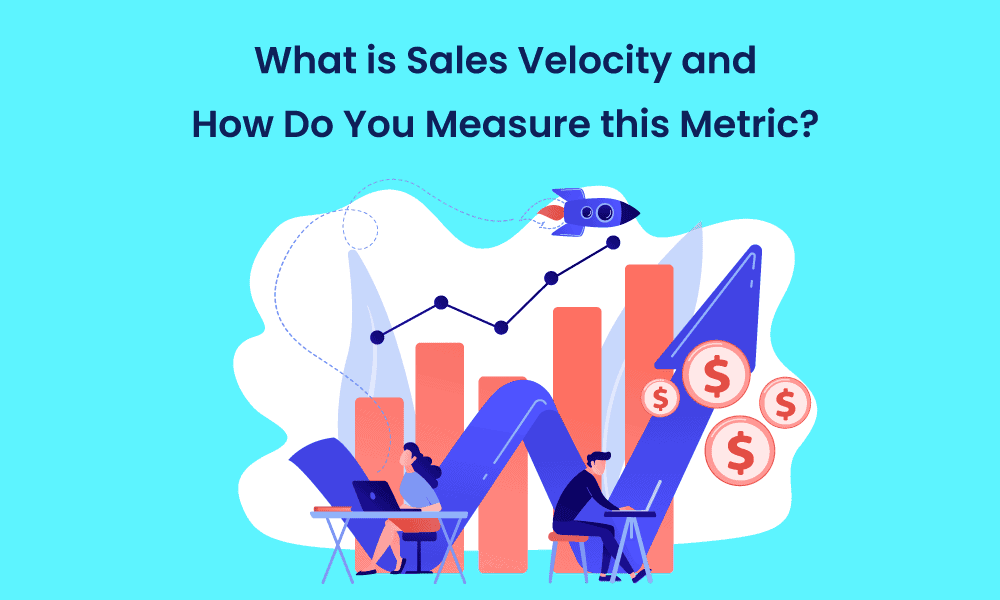Every single thing that moves has velocity. Cars, trains, rockets, airplanes, and even the speed of leads moving through your sales pipeline have velocity.
When it comes to selling, knowing your sales velocity is important. And in this post, we will uncover the A to Z info of what you need to know about sales velocity.
Here are the topics we will discuss today:
- What sales velocity is
- The sales velocity formula
- Variables for calculating sales velocity
- Customer segmentation in sales velocity
- Why sales velocity is an important metric
- 5 factors that cause slow sales velocity
- Best practices for calculating sales velocity
- Strategies for increasing your sales pipeline velocity
Let’s jump right in.
Table of Contents
What is Sales Velocity?
Sales velocity is a measure of how fast sales leads move through your sales pipeline, get closed, and generate revenue for your business. That aside, sales velocity also shows:
- Loopholes your sales team can fix to attract and close more sales opportunities
- How healthy your business is in meeting its revenue goals
- How effective your sales team is
The Sales Velocity Formula
The sales velocity formula relies on four parameters:
- Number of opportunities
- Average deal value
- Win rate
- Length of the sales cycle
Each parameter will vary depending on the market segment you’re dealing with. Therefore, it’s best to have different sales velocity targets for your small, mid-market, and enterprise customer segments.

Variables for Calculating Sales Velocity
Here are some of the most important variables you’ll need to measure your business’ sales velocity.
1. Number of Opportunities
The number of opportunities you have depends on how many leads you acquire from your marketing, referral, lead nurturing, and partner sales networks.
It’s vital that these leads are qualified irrespective of the source. Having a sales pipeline that’s clogged with bad leads will make closing a hassle and your revenue goals could take a hit.
2. Win Rate
The win rate is directly related to your lead quality within a period. And calculating your win rate is simple. Simply identify the number of won sales opportunities and divide that by your total number of sales opportunities.
3. Average Deal Value
The average deal value is the average price of closed deals within a specific time. This is also called the Average Purchase Value or Average Customer Lifetime Value.
4. Length of Sales Cycle
The length of your sales cycle is the period it takes to close a single deal. Having short sales cycles means you have a quality lead pipeline, spend more time closing deals and increase your bottom line.
Read also: What Is Sales Volume? 8 Strategies to Boost Your Revenue
Customer Segmentation in Sales Velocity
Calculating sales velocity by broadly looking at customer segments (small, mid-market, and enterprise) is a good start, but not a great one.
Why? Because you’ll lose sight of a crucial lever that determines the speed of leads movement in your sales pipeline.
And that lever is customer segmentation.
Think of customer segmentation this way:
You are the Head of Sales in a B2B company with numerous customers. You have many sales reps closing small, medium, and large deals. Great. Nowm the next step isn’t to calculate your sales velocity based on the leads’ closed data. Rather, you should drill down on the existing data.
Check out your best-performing customer segments based on their industry, location, the sales rep who closed them, and more. Getting this data enables you to direct your team’s effort and resources into the segments that can help you hit your sales quota quickly.
Plus, drilling down on the data allows you to identify customer segments with the least or average closing potential. With these insights, you can find ways to optimize your sales funnel and further improve your bottom line.
Why Sales Velocity is an Important Metric
Sales velocity plays an immense role in the overall success of your sales processes. It gives you clear insight into the current position of your business, your sales team’s effectiveness, and how close you’re to your revenue goals.
Let’s dig into some reasons why sales velocity is an important metric.
Gauging Your Business Health
Understanding how fast sales opportunities convert into closed-won deals can help you evaluate your business’s ability to succeed. Let’s say your team had a sales velocity of $120 per day last month.
This month, you improve your processes to close more deals at $250 per day. A higher sales velocity means you’re bringing in more revenue in less time. This reflects the growth potential of your company.
Forecasting Revenue
Tracking sales velocity lets you forecast your revenue for specific periods more accurately. If you have a quota of $9,000 monthly but a sales velocity of $250 daily, you know right away you’re short by $1,500. This insight helps you to re-adjust your sales strategy to hit your goals.
Evaluating Your Sales Team’s Effectiveness
Is your sales team struggling to bring in results? Monitoring your sales velocity allows you to assess weak links in your processes, team members, or even individual reps.
Let’s assume that your team’s leads and average deal size look good but your conversions are low, it could mean two things; you either have many low-quality prospects or your closing strategy isn’t at its best.
Breaking win rates down by individual reps could help you identify underperformers.

5 Factors That Cause Slow Sales Velocity
There are several reasons why your sales velocity could be slow. Here are 5 of them:
1. Poor-quality Leads
This is the most common sales velocity bottleneck. In fact, research by Sales Insights Lab found that 50% of all prospects are bad fits. How is that possible?
For one, if your prospects don’t have the budget for your solutions, there’s less likelihood of closing them at all, much less fast. Trying to close leads who aren’t ready to buy yields similar results as well.

Unqualified opportunities can also be individuals with low decision-making power. This is especially common in B2B, where a purchase could involve 6-10 decision-makers. If your prospect has little to no power to commit, sealing deals quickly will be an uphill battle.
Read also: Everything You Need to Know About Marketing Qualified Leads
2. Wrong Closing Technique
Closing deals is the endgame of all sales engagements. The right words can get you to the finish line and the wrong ones could cripple the sale. Common closing mistakes include:
- Hard closing: These are the ‘take-it-or-leave-it’ and ‘yes or no’ techniques that pressure prospects into closing when they’re not ready. This closing technique requires an immediate response from the prospect.
- No personal connection: This happens when sales reps are pushy, overly friendly, or have contrasting communication styles with the buyer.
- Self-centeredness: Do your salespeople focus solely on revenue? Or do they tailor your solutions towards the exact needs of prospects? Opportunities can’t convert to sales if you aren’t 100% dedicated to helping buyers achieve their goals.
- Ignoring sales objections: What are the stiff buyer objections that can cause friction in the sale? How do you resolve them? Do you share customer success stories to empower prospects?
- No sense of urgency: Used right, creating a sense of urgency could help qualified prospects understand why they should act immediately.
3. Investing in the Wrong CRM
The ideal sales CRM software should fit your unique sales processes. If your CRM allows you to capture leads, centralize communications, but has no advanced deals tracking tool, then that’s a problem. That lapse may affect your ability to make informed decisions. The software should also be able to integrate with your other tools either natively or through APIs.
Finally, if your CRM is complex, your sales team may waste precious time learning to use the software rather than converting opportunities. The result? Snail-like sales velocity.
Here’s a 17 minutes overview of EngageBay Sales CRM:
4. Low Product Knowledge
How well can you sell something you don’t fully understand? The likeliest answer is—not well enough.
When sales reps don’t know enough about your offerings, they may not understand its benefits. Neither can they confidently communicate its value to buyers or counter objections.
In other words, you’d spend more effort (and lots of time) moving such leads through your pipeline.
5. Drawn-out Procurement Process
Besides having multiple decision-makers, most companies have a formal purchasing process that can run into months. They may require an internal weeks-long legal review before sealing deals.
Or they may need to consider a specific number of vendors before deciding. When your pipeline is filled with this group of prospects, it could cause a much slower sales pipeline velocity.
Read also: Cycle Time vs Lead Time: Definitions, Differences, and FAQs
Best Practices For Calculating Sales Velocity
Let’s look at some proven tips that can help you measure your sales velocity.
1. Stay Consistent
Before measuring sales velocity, define your variables or criteria and keep them consistent. Making frequent changes could skew your results, affecting your ability to compare results against previous quarters (or years) accurately.
Some questions to mull over when calculating sales velocity include:
- At what point do I consider a potential customer a qualified lead?
- What marks the start of a sales cycle?
- How do I measure average deal size, factoring in high-value contracts and low-value deals?
- Am I segmenting by location, industry, deal size, or other parameters?
- What should I consider a win?
- Should I measure across data points like renewals, new deals, and quick upsells?
2. Extend Your Analysis Period
Lengthening the time you measure sales velocity allows you to get more data; and consequently, more accurate results. Why? Longer periods take into account peak times, lows, or even seasonal trends.
You’ll be able to benchmark performance against previous years to understand the impact of strategies you’ve implemented. Aim for at least a quarter to a year.
3. Tackle Sales Effectiveness
Does your sales velocity point to a low sales effectiveness? Work on improving the levers that directly impact your team’s ability to close more deals.
This includes your win rates, average deal size, and the number of opportunities.
The only variable you don’t want to increase is your sales cycle because it would slow down your sales velocity. You can plan for a longer sales cycle for starters and then analyze ways to shorten it.
Strategies for Increasing Your Sales Pipeline Velocity
Now that you understand the best practices for calculating sales velocity, it’s time to talk about optimizing it. The variables we mentioned earlier directly influence how fast you move leads through your sales pipeline stages. Improving them will boost your sales velocity.
Read also: What is a Sales Pipeline? [8 Tips on How to Build and Manage it]
1. Increase the Number of Qualified Opportunities
Chasing all sales opportunities that show up seems like a good idea. But if your pipeline is bloated with bad leads, you risk wasting time and other resources with no comparable outcome to show. Instead, prioritize high-quality leads that are likely to close faster. Here’s how to optimize your sales opportunities:
- Map out the ideal customer profile to target during sales prospecting.
- Create well-defined criteria for qualifying leads. Explore lead qualification frameworks like BANT, GPCTBA/C&I, and FAINT.
- Use buyer intent data to rank prospects based on their likelihood to convert.
- Set up automated workflows with sales tools to effectively convert leads to opportunities.
2. Improve Your Win Rates
The faster you close deals, the better your sales velocity. But if your prospects aren’t buying, the culprit might be your sales processes. Here’s what to do:
- Reach out to prospects that have decision-making powers
- Fine-tune your initial sales discovery. Dig deep to understand your buyer’s pain points, objections, motivations, and how to align their needs with the solutions you offer.
- Respond faster to opportunities before they go cold.
- Clarify the next steps qualified prospects should take.
3. Optimize Your Average Deal Size
An obvious solution to boost your average deal size is to drive up prices. But it could backfire. Why?
If your company has a defined pricing structure, raising prices without a commensurate value is a fast way to lose customers. Even if such value exists, most customers may switch to alternatives that offer similar benefits.
Therefore, ensure that every additional benefit you offer sets you apart.
You can also drive up your average deal size by
- Identifying cross-selling and upselling opportunities: The idea is to recommend add-ons or solutions that provide real value to the prospect, resulting in saved time, more revenue, or eliminating a pressing need.
- Staying strategic. Are you prioritizing volume—smaller, faster deals? Or large accounts—slow, bigger-value contracts? Or mid-market deals that offer quick closing and fair value? Weigh your options carefully and identify combinations that work best for you.
Read also: Cross-Selling Guide For Beginners (With Examples & Strategy)
4. Shorten Your Sales Cycle
If you’re serving businesses across small, mid-market, or enterprise levels, their closing time will differ. The longer it takes, the slower your sales velocity.
Thus, the first step to shorten your sales cycle is to understand your buyers’ purchasing processes and how long it takes to sell to them.
Other tips that can help you fasten your closing time include:
- Addressing buyers’ objections swiftly.
- Providing relevant content (guides, product descriptions, blogs) and self-service options.
- Automating repetitive tasks such as lead scoring, followups, drip campaigns, etc.
- Offering free trials or time-sensitive offers to induce fast action.
5. Adopt Employee Advocacy
Employee advocacy is simply the promotion of the organization where an individual works. In today’s sales world, the cheapest way to become a strong employee advocate that attracts your ideal prospects is by going all-in on social media.
Now if you’re in B2B, the best social media platform for employee advocacy will be LinkedIn.
Why? Lots of LinkedIn statistics show that it’s the preferred platform for professionals across several industries. And there are results to show for this.
For instance, Dreamdata, a B2B revenue attribution platform used LinkedIn to run an employee advocacy program. The result?
- Better-fit prospects
- More deals
- More mindshare
- More brand awareness
Plus, there is huge cost-saving since the alternative to consistent employee advocacy will be more money spent on LinkedIn ads.
6. Sales partnerships
One of the roadblocks to high sales velocity is when sales reps focus on activities that do not move the needle. Cold calls, cold emails, and spammy outreaches are some of them.
What if you could forget about all that and get only the best-fit prospects without doing all the hard work? Enter sales partnership.
Sales partnership is a great way to improve your sales velocity because you reduce the chance of having bad leads.
This strategy works (especially in B2B) because you’ll be providing complimentary products that fit into your prospect’s tech stack.
Wrapping Up
Having a full pipeline is only half the battle. Understanding what levers to optimize to close those opportunities faster sets you on the right track to success. And that’s an insight sales velocity provides.
Calculate your sales velocity accurately using this guide, and follow the strategies to improve it. To scale the process, implement a robust CRM system like EngageBay that allows you to win at every step of the way; from nurturing leads to tracking deals in your pipeline.
Over 46,000 customers love EngageBay. If you’d like to know why, just sign up for free.


